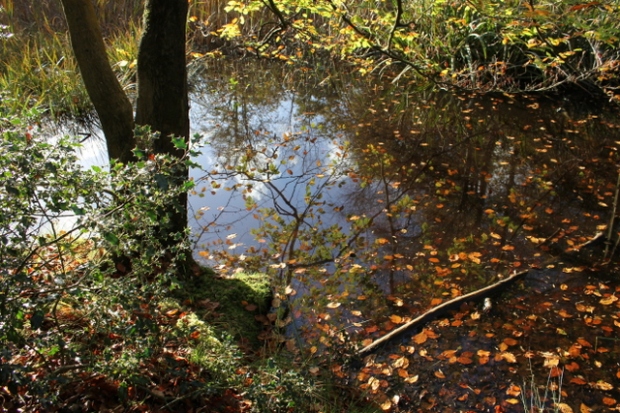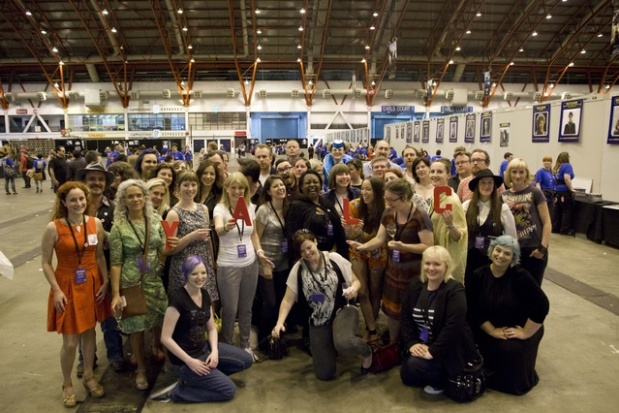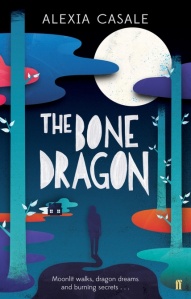Earlier today a retweet popped up in my timeline pointing me to an “interesting and provocative” case (though the retweeter also said he disagreed with it) for why adults should be embarrassed to read YA. Here’s the article in case you’re interested.
I can see why the retweeter thought, on first glance, that the article is well-argued. Actually, it’s just (fairly) well-written and so it simulates a good, reasoned argument – without actually offering one.
One small thing punctures the writer’s whole case: she assumes that adults who read YA *only* read YA.
Or (shock, horror!) YA and detective fiction.
<pause for collective shudder>
Ultimately, her argument is based on the premise that adults who read YA miss out on literary fiction. Instead, most of the YA-lovers I know – adult or young adult – read widely and voraciously across many, many genres. (And, yes, I think YA is primarily a genre rather than age category – but that’s an argument for another time.)
Reading YA doesn’t mean you *only* read YA. Yesterday I finished Apple Tree Yard: today I am reading We Were Liars. I don’t think I’m especially atypical. Different genres collectively deliver different things: that’s why we group books into genres. But most people also recognise the huge variation in books within genres. That’s why Crime has diversified into categories as wide-ranging as ‘hard boiled’ and ‘cosy’ – not to mention the huge number of extraordinary literary crime novels as exquisitely written and constructed as anything in the plain ‘literary’ category.
Ruth Graham unintentionally makes a good, if blinkered and somewhat “smug” (to quote an incensed friend), case for YA… if read alongside books from other genres. Which is the case for most readers. Where does that leave her article?
I suppose she could, instead, have argued that adults should be embarrassed to read YA if that’s all they read, but let’s face it: she wouldn’t have received nearly as much air-time for that article. Not least because lots of people would agree with the gist of the argument. Not the bit about being embarrassed by your reading choices (better to read something than to read nothing, surely). But I think most readers would agree that reading YA – or any other genre – to the exclusion of all others means you miss out on the wonderful diversity of literature.
I’d counter-argue that YA is incredibly diverse – arguably the most diverse genre/category out there – but I still wouldn’t want to be restricted to just that section in a bookstore.
But leaving aside the gaping flaws in her premise, Graham goes on to say some downright silly – and ignorant – things, notably this:
Most importantly, these books consistently indulge in the kind of endings that teenagers want to see, but which adult readers ought to reject as far too simple. YA endings are uniformly satisfying, whether that satisfaction comes through weeping or cheering.
I don’t disagree that a lot of YA is slightly neater than a lot of literary fiction in terms of endings: literary fiction is famous for messy (and often irritating) endings. In point of fact, quite a few literary books would be better for a neat ending rather than one that’s only messy to make a pretentious point: if the story hasn’t lead to messiness, then tacking it on at the end is worse than starting and following a path to something relatively neat and satisfying.
But as for the claim that YA endings are “uniformly” “simple” and “satisfying”… Well, Graham has obviously not read much YA, recent or classic. On this point she is patently and unarguably wrong. And it’s not too often you can say that about anything to do with literature.
Take the first example to pop into my head… double Carnegie winner Patrick Ness. Ness’ writing is extraordinary. He’s up there for me with writers that would presumably meet Ruth Graham’s approval, like Anne Tyler and Barbara Kingsolver. This is a person who has a unique, fascinating voice. Who does creative things with language without doing them as a statement of how creative and unique he is: this is how his mind works, the words it conjures – just as it is for the best literary fiction writers. And his endings are anything but neat, simple, tidy. Sometimes they’re not at all ‘satisfying’ – at least in the simplistic ways Graham is criticising. Some are as complex and difficult as anything in literary fiction.
How about the lovely Tim Bowler or the challenging Siobhan Dowd, just to look at other Carnegie winners who come quickly to mind? There are so many other writers I could mention in this regard. Take Ruta Sepytys’s wonderful Out of the Easy, recently shortlisted for the Waterstone’s Children’s Book Prize. This is fully equal to Sarah Waters’ historical fiction for literary value in my opinion: I’d argue that it is often even more nuanced and difficult and “unsatisfying” (in Graham’s terms). How about YA fantasy, which Graham rubbishes at the start of her article? Melinda Salisbury’s The Sin Eater’s Daughter delivers a messy, difficult ending that doesn’t satisfy in simple terms at all… but does satisfy on all the more complex levels Graham is talking about; it’s what probably would happen; it’s realistic and interesting and difficult. I’m still chewing away at my feelings about it.
Last (and not to blow my own trumpet but because it’s the book I know the most about) there’s my own debut novel, The Bone Dragon. I defy Ruth Graham to say that the ending is simple, neat or simplistically satisfying. One of my favourite reviews, by Isabel Popple at The Stardust Reader and on the Waterstone’s site, says this of the ending:
Other reviews I’ve read for The Bone Dragon are all massively praiseworthy, calling it wonderful, captivating, magical, hypnotic. And it is certainly all of these things, but it’s also extremely unsettling – and this is the predominant feeling I’ve been left with. Darkness overlays everything else within, no matter how beautifully constructed it might be. Tread lightly, readers.
She concludes that the book “left me feeling itchy inside my skin”. That’s exactly what I hoped readers would feel. For me, while I’m inside the book the ending is satisfying and empowering and tied up in a neat little bow. When I step outside the book, the ending becomes anything but. It becomes frightening and sad, tugging me in at least two directions. It’s a book that can’t end happily for everyone – not just inside the book but once the cover closes – and that is the whole point. It’s a book with no answers, just a lot of difficult questions.
So I challenge Graham to read this or any of the other books people must be pouring in to offer as examples of the fact that she has managed to be outright wrong in a field where that’s actually pretty hard.
Or we could just go back to the beginning of the article and the fact that the whole piece is built on a silly, badly thought out premise.
So here are my thoughts…
Read. Read widely. Be proud of reading. Be proud of reading widely.
Just don’t be snotty about it.
There’s room for all sorts of books and the world is better for that fact.











